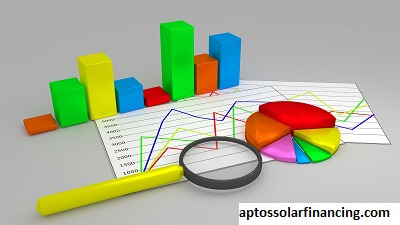The Meaning of Commercial Distribution Finance: A Deep Explanation:
Commercial Distribution Finance, Commercial distribution finance has become one of the key elements of the financial dynamics of any venture within a competitive marketplace, as today. This article thus gives a comprehensive overview of commercial distribution finance and importance, its mechanism, benefits, challenges, and future trends.
What is commercial distribution finance?

Commercial distribution finance is a term that refers to the financial arrangements and tools used for financing and facilitating the distribution of goods and services that move from a manufacturer through middlemen such as wholesalers and retailers to consumers. In any supply chain, it covers products and services such as inventory financing, accounts receivable financing, and more.
The basic objective of commercial distribution finance is to offer financing on goods from the origin to the end of the supply chain so that distributors can carry the appropriate amount of stock while simultaneously optimizing cash flow. This kind of financial structure is critical for companies that operate on thin margins and, as such, should handle their capital appropriately.
Key Aspects of Commercial Distribution Finance:
- Inventory Financing: In general, it is short-term loans or lines of credit that allow companies to borrow against inventories. This type of financing is very useful for distributors who buy in large volumes and do not have cash available at the moment.
- Accounts Receivable Financing: It is a cash advance loan secured using outstanding invoices as collateral. Accessing funds locked in receivables helps cash flow out of distributors’ operations during Account Receivable Financing.
- Supply Chain Financing: This is a more holistic approach toward optimization in the flow of funds throughout an entire supply chain. In broad strokes, that could probably imply techniques like dynamic discounting, whereby buyers could help pay suppliers earlier for discount benefits, thereby improving their overall liquidity.
- Factoring: The sale of receivables to a third party, usually known as a factor, at a discount for immediate cash. This way, the distributor overcomes cash flow problems, and the factor collects the respective receivables.
- Trade Credit: In this method, the supplier usually grants trade credit to the business, by which one can purchase goods and settle the payment at a later date. Thus, distributors may find relief under cash flow pressures also.
Why Commercial Distribution Finance?
The importance of commercial distribution finance, the following can summarize key points in a nutshell:
1. Cash Flow Management: Effective management of distribution finance would ensure that companies deal with cash flows effectively. A right financing solution gives distributors liquidity levels that ensure that companies do not default to operational costs, suppliers, and growth prospects.
2. Inventory Optimization: With inventory finance, companies are saved from holding too much or too little stock. This means distributors have the right amount of product they need to respond to their customer demand but do not have too much capital locked up in unsold stock.
3. Reduction of Risk: Many risks make it impossible for distributors to be sure. The more typical would include uncertain demand and supplier reliability. Distribution finance has tools that help reduce such risks, hence aiding businesses to act fast in case there is a market change.
4. Growth Opportunities: Access to flexible financing means that businesses can cash in on growth opportunities. Whether it is the introduction of new product lines, entry into new markets, or investment in technology, the funding provided by distribution finance enables all these ventures.
5. Supplier Relations: Commercial distribution finance can help strengthen supplier relations. With commercial distribution finance, delinquencies are minimized, and distributors can exert more influence over their suppliers, negotiating better deals and, eventually, building more trust.
Advantages of Commercial Distribution Finance:
The advantages of commercial distribution finance extend beyond mere liquidity. Here are some key benefits:
- Competitiveness: Funding is received on schedule which brings competitiveness to businesses. A business firm that maintains control over its cash flows and inventory also quickly responds to the market and outperforms its competitors who experience capital constraints.
- Better Financial Health: If financial products are engineered in a way to be distributed, then the financial health of a company improves as a whole. That may be in terms of earning better and more effective scores with lenders and in the flexibility of operations.
- Improved Operational Efficiency: Operational efficiency is improved if the right financial tools are available for distributors. Efficient cash flow management and control over inventory will ensure that processes are optimized, reducing waste and thus increasing productivity.
- Higher Degree of Innovation: Access to capital triggers innovation in distribution companies. Businesses can invest in new technologies, adapt e-commerce solutions, and upgrade customer services without compromising financial stability.
Problems in Commercial Distribution Finance:
Even with these advantages, businesses face several challenges in commercial distribution finance:
1. Complexity of Financing Options:
Financing options are very diversified and might even overwhelm distributors. One needs an expert hand in getting to know the subtleties of each product and then selecting just the right mix that caters to specific business needs.
2. Cost of Financing:
The cost of financing can be fairly broad, even when a distributor’s risk profile might vary significantly. Its adverse impact in the shape of higher interest rates or less-than-favorable terms could take much away from profit margins, therefore making the need for proper care all the more essential.
3. Market Volatility:
Economic fluctuations have an impact on the demand and supply, thereby creating periodic fluctuations in distributors’ cash flows. This volatility may not be sound for sustainable stabilization of funding arrangements.
4. Credit Risk:
Account receivables financing exposes credit risk on the customer’s side. It may result in financial stress if there are too many defaults on the accounts.
Future Trends in Commercial Distribution Finance:
Some of the trends to be seen in the commercial distribution finance landscape include:
1. Digital Transformation:
Fintech firms are disrupting the gamut of finance distribution. Digital platforms are making financing processes fast to authenticate and offer increased transparency in terms. Data analytics and automation have now become supportive of the decisions involved in creditworthiness assessments and inventory management.
2. Sustainability Focus:
Where sustainability has become just a slogan, distributors today want options that give them green financing. This involves funding for sustainable practices or allowing them to offer environmentally friendly products to this section of emerging consumers.
3. Supply Chain Resilience:
When the pandemic hit COVID-19, resilient supply chains were in high demand. Now, companies are investing in technologies and financing options that improve the visibility and flexibility of their supply chain to make fast adjustments to all disruptions that may come about.
4. Rise of E-commerce:
Expanding e-commerce disrupts the dynamics of distribution. This means that companies need financing that will run parallel with online sales, such as those aligned to quick inventory turns and fulfillment logistics.
5. Collaborative Culture:
Nowadays collaboration between distributors, manufacturers, and financial institutions has increasingly increased more and more. Using joint financial solutions that take into account the whole extent of the supply chain becomes more and more common; it leads to stronger partnerships and efficiency improvement.
Conclusion:
Commercial distribution finance is a key component of the modern corporate business because it gives comfort in supply chain management while optimizing cash flow and stock levels. To understand the several elements, advantages, disadvantages, and future trends in commercial distribution finance, several goals are of significant importance that will enable a business organization to make informed decisions to utilize the power of distribution finance effectively.
As the market continues to evolve, businesses embracing new financing concepts and changing consumer behavior will do much better. Commercial distribution finance, which is successful in endorsing business expansion, also fosters the well-being of the economy through enhancing the movement of goods and services.










